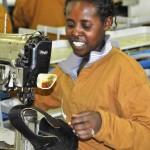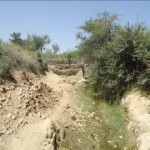Beekeeping is an ancient tradition in Ethiopia, stretching back into the country’s early history—between 3500 and 3000 B.C., according to some history books. Collecting and selling honey and other bee products produced in homes and home gardens is common throughout the country.

Because of its fine leather and commitment to top quality, Ethiopia has recently become a magnet for international retailers seeking high-end shoes. Ethiopian shoe companies offer it all—fine-dress, casual and sport footwear.

Ethiopian designer Fikirte Addis feels like she is "ready to fly.” A one-time child psychologist with a passion for design, Addis took a risk in 2009 by launching her own fashion brand—Yefikir Design.
Despite a fast-growing economy, Ethiopia remains one of the poorest countries in the world. It is prone to weather-related shocks and experiences high levels of food insecurity, particularly among rural populations and smallholder farmers.

In northern Ethiopia, the rocky, dry Tigray region experiences high food insecurity and frequent shocks. In Mereb Leke wareda, a district within Tigray region, roughy a third of the population of 117,000 lives below the poverty line and produces only about a third of their annual food needs. They get by through market purchases and food received through a social safety net program.
The Productive Safety Net Program, or PSNP, was launched by the Government of Ethiopia in 2005 to help food-insecure families access food 12 months a year and protect community assets through public works projects. USAID is one of nine donors funding this program.








Comment
Make a general inquiry or suggest an improvement.